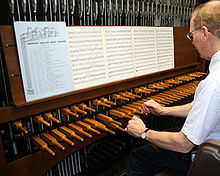I think the point not to be missed here is the song was chosen in a nation-wide contest (CBC - Radio 2 Canada) by fans of all Canadian artists. They were asked what song they would like to hear ring out from the Peace Tower Carillon in honour of Canada Day.
Leonard's Cohen's magnificent "Hallelujah" was the winner. On the morning of July 1, 2010 the bells in Ottawa pealed "Hallelujah" over the nation's capitol. I thing that is sort of fantastic!

Here are pictures of the Peace Tower in Ottawa -



Below is part of the description of "carillon" from Wikipedia - and a picture - from which you can clearly see that this is not a "delicate" instrument.

As noted in the description it can weigh up to 100 tons - and it is played by hitting the keyboard with one's fists! And also noteworthy is that it is a symbol of "civic pride and status." So - I would say again that the point to be taken here is that Leonard's song was chosen to be played on this instrument in celebration of Canada Day. This actual version - an arrangement for carillon - I think cannot realistically be compared to any other. A Canadian artist's song was going to be played on the carillon - and the listeners voted that it be Leonard Cohen's "Hallelujah."
The awful truth or the "Emperor's clothes" here is that sometimes during this audio, whether it is because of the recording itself or because of the nature of the carillon and the abundance of "overtones," the "Hallelujah" seems to get a bit lost in the pealing and chiming of the bells! (See quote below from Wikipedia regarding the difficulty in recording of the carillon) But it
is recognizable and it
was played on Canada Day - and I think this is one for the Leonard Cohen record books! One should not be deterred from the significance of the honour by the cumbersome nature of the carillon!! I wish I had been there to hear it.


I mean - and not meant as being boastful - but just as a measuring stick - I'm just wondering: has an artist like Bob Dylan or Bruce Springsteen been honoured with the playing of one of their songs on the carillon at the National Cathedral in Washington DC on July 4th? I'm not positive - but I don't think so. I don't know who keeps Leonard's Wikipedia up to date, but so far this has not be added. I think it should be - under "Hallelujah" and under "Awards, Titles and Honors." I remember when Leonard received the Lifetime Achievement Award at the Grammys, someone "tweeted" that Leonard's Wikipedia was updated to reflect the award within a couple of minutes of receiving it!!

Who did that? Who is in charge of his Wikipedia?


(In spite of my use of smilies here - I'm serious.)
http://en.wikipedia.org/wiki/Leonard_Cohen


Read the whole description at the link -
http://en.wikipedia.org/wiki/Carillon
A carillon (English pronunciation: /ˈkærɨlɒn/, /ˈkærɨljɒn/, or /kəˈrɪljən/; French: [kaʁijɔ̃]) is a musical instrument that is usually housed in a free-standing bell tower, or the belfry of a church or other municipal building. The instrument consists of at least 23 cast bronze cup-shaped bells, which are played serially to play a melody, or sounded together to play a chord. A carillon is played by striking a keyboard called a "baton" with the fists and by pressing the keys of a pedal keyboard with the feet. The keys mechanically activate levers and wires that connect to metal clappers that strike the bells, allowing the performer, the carillonneur, to vary the intensity of the note according to the force applied to the key.
The carillon is the heaviest of all musical instruments; the total weight of bells alone can be 100 tons in the largest instruments. The greatest concentration of carillons is still found in the Netherlands, Belgium, and Northern France, where they were symbols of civic pride and status. Some of the most spectacular are now protected by UNESCO as part of the world heritage site the Belfries of Belgium and France. The Stephen Foster Memorial Carillon bell tower, two hundred feet high with 97 bells, is the world's largest tubular bell instrument.
The carillonneur or carillonist is the title of the musician who plays the carillon. The carillonneur/carillonist usually sits in a cabin beneath the bells and presses down, with a loosely closed fist, on a series of baton-like keys arranged in the same pattern as a piano keyboard. The batons are almost never played with the fingers as one does a piano, though this is sometimes used as a special carillon playing technique. The keys activate levers and wires that connect directly to the bells' clappers; thus, as with a piano, the carillonneur can vary the intensity of the note according to the force applied to the key. In addition to the manual keys, the heavier bells are also played with a pedal keyboard. These notes can either be played with the hands or the feet.
...
To a musician's ear, a carillon can sound "out of tune." Poorly tuned bells often give this impression and also can be out of tune with themselves. This is due to the unusual harmonic characteristics of foundry bells, which have strong overtones above and below the fundamental frequency.
...
Recording the carillon is notoriously difficult. The extreme amount of sound waves that are generated and the layout of a carillon present problems not found in normal recording situations. The use of PZM microphones can handle the enormous waves of sound, but it isn't possible to decide on the location of the microphones without experimentation.





